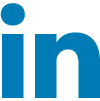Andrew Lacas
May 12, 2021
Money Monthly commentaryAlpha Portfolio Update
As the market continues to rotate from growth to value I thought it would be an opportune time to highlight our Alpha Portfolio and how we continue to navigate our investments. If you recall, the Alpha Portfolio is a combination of our highest conviction companies or funds. We have tended to be well balanced between what we would describe as new and old economy stocks. Launched in Sept 2019, we have slightly outperformed our benchmark but with significantly less volatility. As of the end of March our 1 year up capture was 0.82 meaning for every dollar the benchmark went up we gained 82cents, but more importantly our downside capture was only 0.09 so we only lost 9 cents for every $1 the benchmark went down. This helped us create Alpha of 6.59, which is the excess returns earned on an investment above the benchmark return. In our case the benchmark consists of 50% S&P/TSX Composite, 25% S&P 500 C$, 25% MSCI EAFE C$.
The tweaks we’ve made to the portfolio this month give a clear example of how we are balancing both the new and old economies and I wanted to highlight the moves that we have made.
Let’s start with two “new economy” companies. ASML Holdings and Cyberark.
We first bought ASML last April and have added to it on multiple occasions, most recently earlier this month. Our belief is that microchips and transmitters are going to continue to be needed in massive amounts over the coming years. Not only that, we will continue to have more demand for quicker and smaller chips as we move more of our technology to the “edge”. Quick way to think of this is if you have an Alexa or some other device there is latency as you ask it a question, it then fires that question back to a computer before the answer is sent back to you. However for devices at the edge of the network that can’t afford any delays they need to move the computing power to the edge as well.ie. When your self-driving car makes a decision it can’t afford to have any latency, or any of the plethora of internet of things, of 5G devices etc. For these devices to work we need the most powerful transmitters available and there aren’t enough of them.
Ford has announced they are temporarily shutting down 5 F150 plants in the US because they can’t get chips. Historically there has always been a boom/bust cycle for chips but what’s different this time is the massive amount of demand that is coming online from new sources over the coming years. Because of this demand all of the chip manufacturers are ramping up their build out of factories and spending billions to do it.
The density of transistors on the wafer of a semiconductor is measured in nanometers (nm). The closer they are the better the performance and lower the power that’s needed. To put this into context a sheet of paper is 100,000 nm, my beard grows at 10nm/second and human DNA is 2.5 nm. Currently we are down to 5nm and Taiwan Semiconductors is building 4 nm. They are doing this because the difference between a 7nm and a 5nm chip is the reduction of 30% energy consumption for the same speed output or 15% increase performance increase at the same power level. Currently the only way to make nodes 7nm or smaller is to use a technology called Extreme Ultraviolet lithography which brings us to ASML.
ASML makes a machine that costs an average of $144M euros and this machine is the only machine in the world capable of placing these tiny transistors this precisely. Every high end chip in the world has been made with ASMLs machine. As all these companies like Taiwan Semiconductors builds out their new factories we expect that they are going to equip them to make the best chips they can which means they should be buying a lot of ASML machines over the coming years.
This is why we are going to continue to use weakness to make this company a larger position in our portfolios, it is roughly 2.5% of the Alpha portfolio. It currently trades at 44x next year’s earnings but for a company that has a monopoly on this segment of the market we believe that is a very reasonable level Analysts believe that their EBITDA will grow roughly 85% over the next 5 years but we think that’s probably on the low end as analysts have consistently underappreciated this company for a number of years.
Cyberark is another company that we own albeit in a lower weighting at just under 2%. We had owned a company called OKTA, a very large cybersecurity company that we had initially bought for roughly $185 and then increased at $205 and sold the whole position at $276. We felt that the valuations on the company had gotten ahead of itself and wanted to take the profits. Wanting to ensure that we still have exposure to a great cybersecurity business we’ve been adding to Cyberark as they are a leader in what’s called privileged access management. What this means is relatively straightforward in that every employee in a company needs access to technology but they all have different levels of access that are necessary. As an example as an employee of CIBC I don’t need access to clients banking information and the branch representatives don’t need access to your Wood Gundy information so we have no access to any of that information. So what Cyberarks technology does is continually scans a company’s network and identifies all devices that accessing network resources. It then uses a form of AI called machine learning to pinpoint abnormal behaviour and shuts it down and informs the security team. Cyberark is a leader in this type of security dealing with more than half of the Fortune 500 companies and thousands of others. The SolarWinds security breach shows why this type of security is needed. https://theconversation.com/the-colonial-pipeline-ransomware-attack-and-the-solarwinds-hack-were-all-but-inevitable-why-national-cyber-defense-is-a-wicked-problem-160661
The other two companies that have been recently purchased are at the other end of the scope and are companies that won’t take very long to explain.
Berry Global is now our largest single security in the portfolio at roughly 4.5%. Berry was one of the names that we have held at different levels since the portfolio was created back in 2019 buying in the high 40’s and continues buying it down to the high 20’s last March. Berry is now trading north of $68USD. So what does Berry do? They are the worlds largest plastics manufacturer. They don’t make things such as plastic bags, they make industrial grade and medical grade plastics. A lot of the PPE that is being used to fight covid such as visors and gloves are made by Berry. They have over 300 manufacturing facilities around the World and are currently trading at roughly 12x earnings. With the S&P 500 trading at roughly 44x earnings this stock looks quite cheap. Whether we like it or not, plastics are going to be part of our lives for quite some time and this company has a global footprint, is dominant in the space and has a fantastic management team. As you are aware I hold the responsible investment advisor certification so you might be asking how a plastics company would make it into one of our portfolios. Berry Global actually rates quite high for ESG rankings. From an environmental standpoint they are committed to improving their environmental footprint and making products that are more environmentally friendly.
The final company we wanted to highlight is also our most recent addition. Advantage Oil & Gas was a replacement for Suncor. We had been holding Suncor as a lower volatility way to have some energy exposure. We believe that oil and gas stocks are poised to have a solid recovery as the World re-opens. Over the coming quarters people will get back in their vehicles again and travel on planes and boats. This re-opening will cause a demand for oil and gas. We moved from Suncor to Advantage as we believe that the worst for the oil patch is behind us and it is time to have a little more torque to the upside which is provided by a company like Advantage. Although over the long term we are big believers in renewable energy we do believe that the demand for fossil fuels isn’t going away anytime soon and we are want to be able to participate in what we expect to be a strong tailwind for the sector for a number of months.
As you can see, the mandate is flexible and allows us to navigate the different market cycles, while always attempting to get the best possible outcome for you our clients. Although sector rotation and volatility is inevitable, as long as we're buying good quality businesses and give them time then we know over the long term we'll be in good shape.




